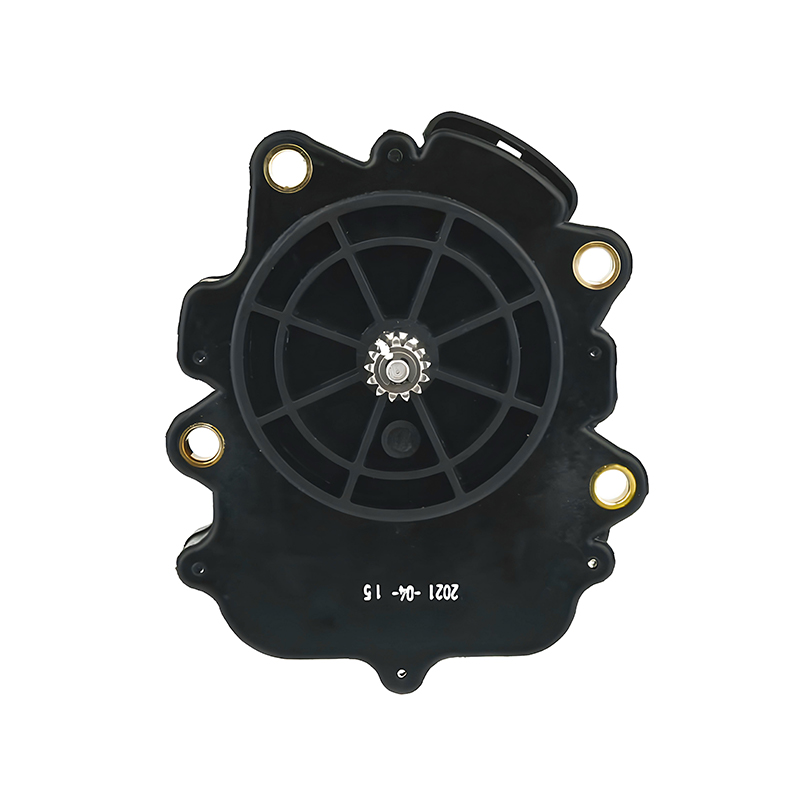This upgrade marks a meaningful step toward smarter and more reliable windshield wiping operations, improving the driver's visibility under various weather conditions.
Traditionally, wiper motors operated at fixed speeds, with limited response to changing environmental inputs. Drivers often had to manually adjust the settings based on rainfall intensity or road conditions. With the new series, however, the motor automatically adapts its speed through embedded control logic. The speed control system dynamically responds to sensor input, adjusting wiping intervals to maintain consistent clarity on the windshield.
This advancement wouldn't be possible without rethinking the internal parts of wiper motor systems. Engineers have fine-tuned the interaction between the gear train, brushes, armature, and control modules. These components, often overlooked, now work together more cohesively to enable smoother transitions between different speed levels. For example, under light rain, the motor reduces its cycle rate to conserve energy, while in heavier conditions, it increases frequency to maintain visibility. The innovation lies not just in software calibration, but in how the parts of the wiper motor physically accommodate these rapid changes in torque and power distribution.
Interestingly, some of the technology used in this wiper motor series has roots in the compact design philosophies found in the mini window motor sector. These motors, known for their tight packaging and efficiency in constrained spaces, provided useful insights into lightweight yet strong motor assembly. The mini window motor industry has long dealt with issues such as noise suppression, thermal management, and load fluctuations. Applying similar principles to the parts of wiper motor—such as using noise-dampening materials and improving thermal dispersion—allowed the development team to create a unit that is both responsive and durable.

Beyond just speed control, the new wiper motor series is designed for ease of installation and compatibility with a wide range of vehicle types. This is particularly beneficial for manufacturers looking to streamline assembly processes. As the parts of wiper motors become more standardized yet flexible in configuration, they support broader use across different car models, from sedans to SUVs. At the same time, attention was paid to keeping the motor compact—drawing again from the success of the mini window motor form factor. This ensures the motor fits neatly within the available space without interfering with other components on the vehicle's firewall or under the hood.
From a maintenance perspective, the inclusion of a modular speed control board means that diagnostics and repairs can be carried out with more precision. Instead of replacing the entire motor, technicians can isolate specific components based on sensor data. This not only reduces repair costs but also extends the lifespan of the parts of wiper motor that are still functioning properly. Furthermore, because mini window motor designs are known for their modularity, their approach to replaceable modules and plug-in wiring was adapted here to benefit the new wiper motor series.
Performance testing has shown consistent wiping results in varying weather conditions, including cold starts and humid environments. This is partially due to enhancements in the casing design, but more importantly, due to refined coordination between mechanical and electrical parts of wiper motor. While the gear train ensures accurate movement, the embedded speed control algorithm communicates with sensors to adapt timing in real-time. Interestingly, this coordination bears a strong resemblance to how mini window motor systems operate in electric windows—adjusting force and motion based on resistance, such as a stuck window or unexpected obstructions.
As vehicles become more connected and intelligent, the systems within them must also evolve. The integration of a speed control system into the wiper motor is more than a technical upgrade—it reflects a broader shift toward smarter, more adaptive vehicle design. The experience gained from developing mini window motor solutions has clearly played a role in this evolution. Whether in urban driving or highway travel, this new motor ensures safer, quieter, and more efficient operation, underpinned by innovations in both software and the carefully designed parts of wiper motor assemblies.
In conclusion, this series not only highlights advancements in motor control but also shows how lessons from the mini window motor segment can influence broader automotive applications. By improving how the parts of wiper motor interact and respond, the result is a system that's both smarter and better suited for the changing demands of modern driving.
Your email address will not be published. Required field are marked*